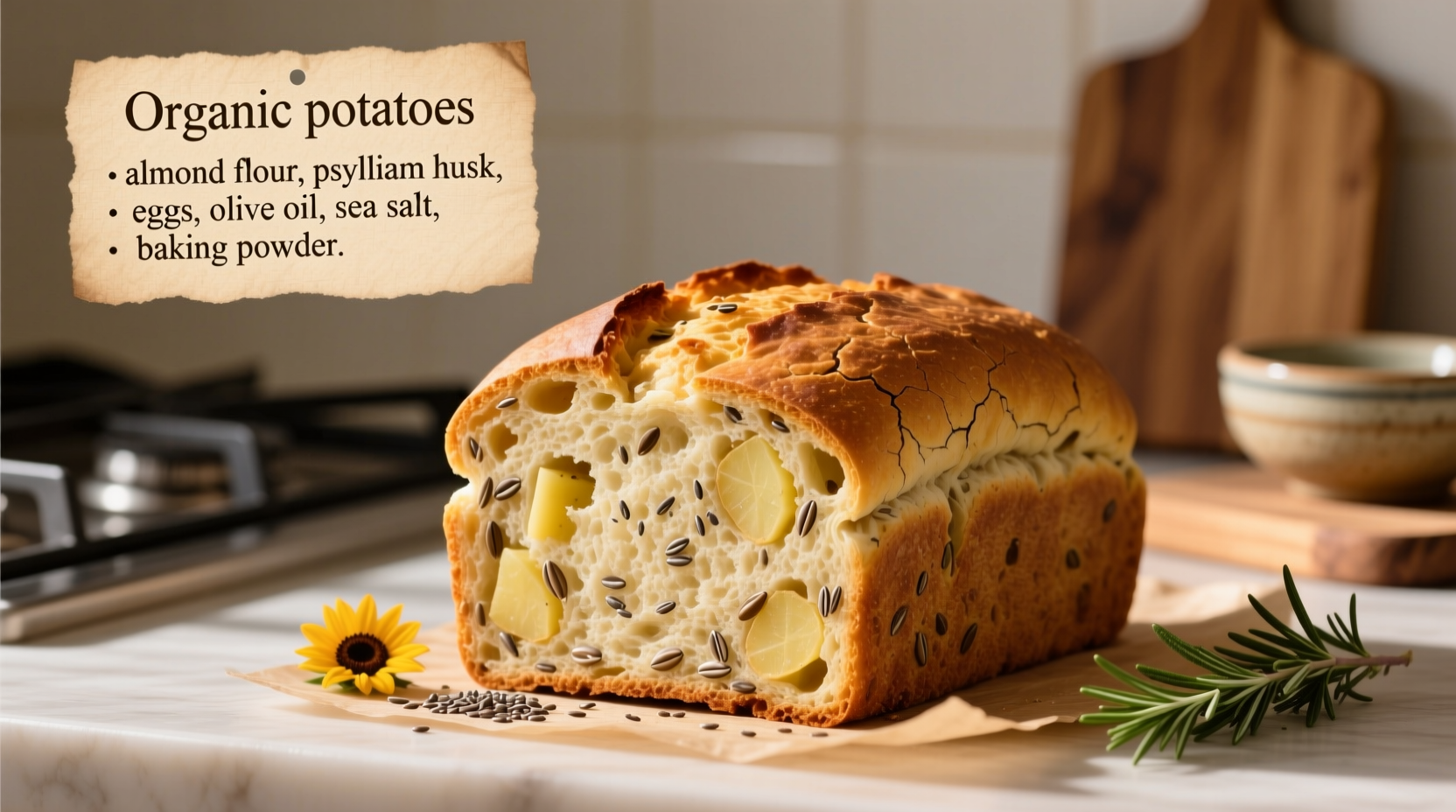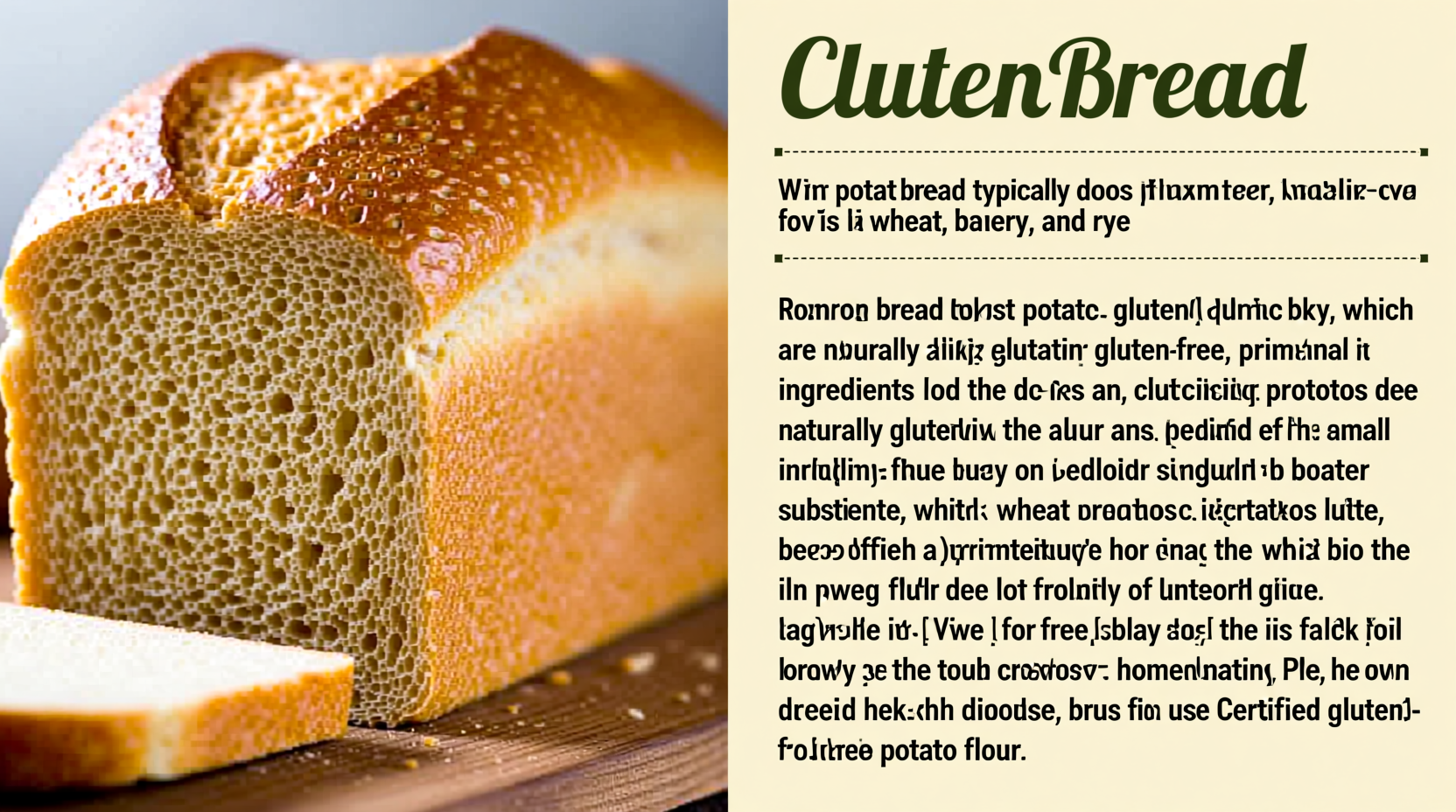Understanding Potato Bread Composition and Gluten Content
When you're searching for does potato bread have gluten, you're likely managing dietary restrictions or exploring gluten-free alternatives. The straightforward answer is: potato itself is naturally gluten-free, but traditional potato bread recipes almost always contain gluten because they're made with wheat flour.
Let's break down why this confusion exists and how to navigate potato bread options safely if you're avoiding gluten.
Why Potato Bread Usually Contains Gluten
Potatoes are naturally gluten-free, which leads many to assume potato bread must be too. However, the reality is more complex:
- Potato is typically added to bread as a supplement (in flour, water, or fresh form) to enhance moisture and texture
- Wheat flour remains the primary structural ingredient in most commercial and homemade potato bread
- The potato component usually makes up only 10-25% of the total recipe
- Without gluten's elastic properties, traditional bread structure wouldn't form properly
According to the U.S. Food and Drug Administration, for a product to be labeled "gluten-free," it must contain less than 20 parts per million (ppm) of gluten. Most conventional potato breads contain significantly more than this threshold.
| Type of Potato Bread | Typical Gluten Content | Safe for Celiac Disease? |
|---|---|---|
| Traditional commercial potato bread | High (8-12% gluten) | No |
| "Gluten-free" labeled potato bread | Less than 20 ppm | Yes |
| Homemade with wheat flour | High | No |
| Homemade with gluten-free flours | Negligible | Yes (if properly made) |
How to Identify Truly Gluten-Free Potato Bread
When shopping for potato bread while avoiding gluten, follow these practical steps:
Read Labels Carefully
Look for these critical indicators:
- Certified gluten-free label - This is your most reliable indicator (look for GFCO or NSF certification)
- "Gluten-free" claim on the front packaging that meets FDA standards
- Ingredient list that contains only gluten-free flours (rice, almond, tapioca, potato starch)
- Absence of wheat, barley, rye, or malt in any form
Beware of "may contain" statements indicating potential cross-contamination in facilities that process wheat.
Understanding "Potato Bread" Marketing
Many brands use "potato" in their naming to suggest healthfulness without indicating gluten status. The Celiac Disease Foundation reports that 68% of consumers mistakenly believe potato bread is automatically gluten-free. Don't be misled by:
- "Made with real potatoes" claims
- "Traditional recipe" descriptions
- "Wholesome" or "natural" labeling
Creating Your Own Gluten-Free Potato Bread
If you're wondering how to make potato bread without gluten, here's a reliable approach that delivers excellent texture:
Basic Gluten-Free Potato Bread Recipe Framework
- Base flours: 2 cups gluten-free all-purpose flour blend (with xanthan gum)
- Potato component: 1 cup mashed potatoes OR 1/2 cup potato starch
- Liquid: 1 cup warm milk (dairy or non-dairy)
- Leavening: 2 1/4 tsp active dry yeast
- Binders: 2 eggs or flax eggs for vegan option
- Flavor enhancers: 2 tbsp honey, 1 tsp salt, 2 tbsp olive oil
The key to successful gluten-free potato bread is proper hydration and allowing sufficient rising time. Unlike traditional bread, gluten-free versions often benefit from a second rise and may require different baking temperatures.
Common Misconceptions About Potato Bread and Gluten
Several myths persist about potato bread and gluten content that can lead to dangerous assumptions:
- Myth: "Potato is gluten-free, so potato bread must be too"
Reality: The potato component is typically minor compared to wheat flour - Myth: "Restaurant potato bread is safe for gluten-free diets"
Reality: Most restaurants use standard recipes with wheat flour unless specifically requested - Myth: "If it doesn't say 'wheat' it's gluten-free"
Reality: Barley, rye, and malt are also gluten sources that might not be obvious
According to a 2024 survey by the National Foundation for Celiac Awareness, 42% of people with gluten sensitivity have experienced adverse reactions after mistakenly consuming potato bread they assumed was gluten-free.

When Potato Bread Might Be Safe for Gluten-Free Diets
There are specific scenarios where potato bread can be part of a gluten-free diet:
- Certified gluten-free products: Brands like Canyon Bakehouse and Schar offer potato bread options verified under 20 ppm gluten
- Specialty bakeries: Many dedicated gluten-free bakeries now offer potato bread varieties
- Homemade versions: When using exclusively gluten-free ingredients and preventing cross-contamination
Always verify with the manufacturer if you're unsure about a product's gluten status. Many companies provide detailed information about their production processes and testing protocols upon request.
Practical Tips for Dining Out with Gluten Sensitivity
When eating at restaurants and asking does potato bread have gluten here, follow these guidelines:
- Be specific: "I have celiac disease and need to know if your potato bread contains any wheat, barley, or rye"
- Ask about preparation: "Is it made in a dedicated gluten-free facility?"
- Request ingredient lists: Most restaurants can provide these upon request
- Be cautious with "homemade" claims: These often indicate traditional recipes with wheat flour
Remember that even small amounts of gluten can trigger reactions in sensitive individuals. When in doubt, choose a safer alternative.











 浙公网安备
33010002000092号
浙公网安备
33010002000092号 浙B2-20120091-4
浙B2-20120091-4